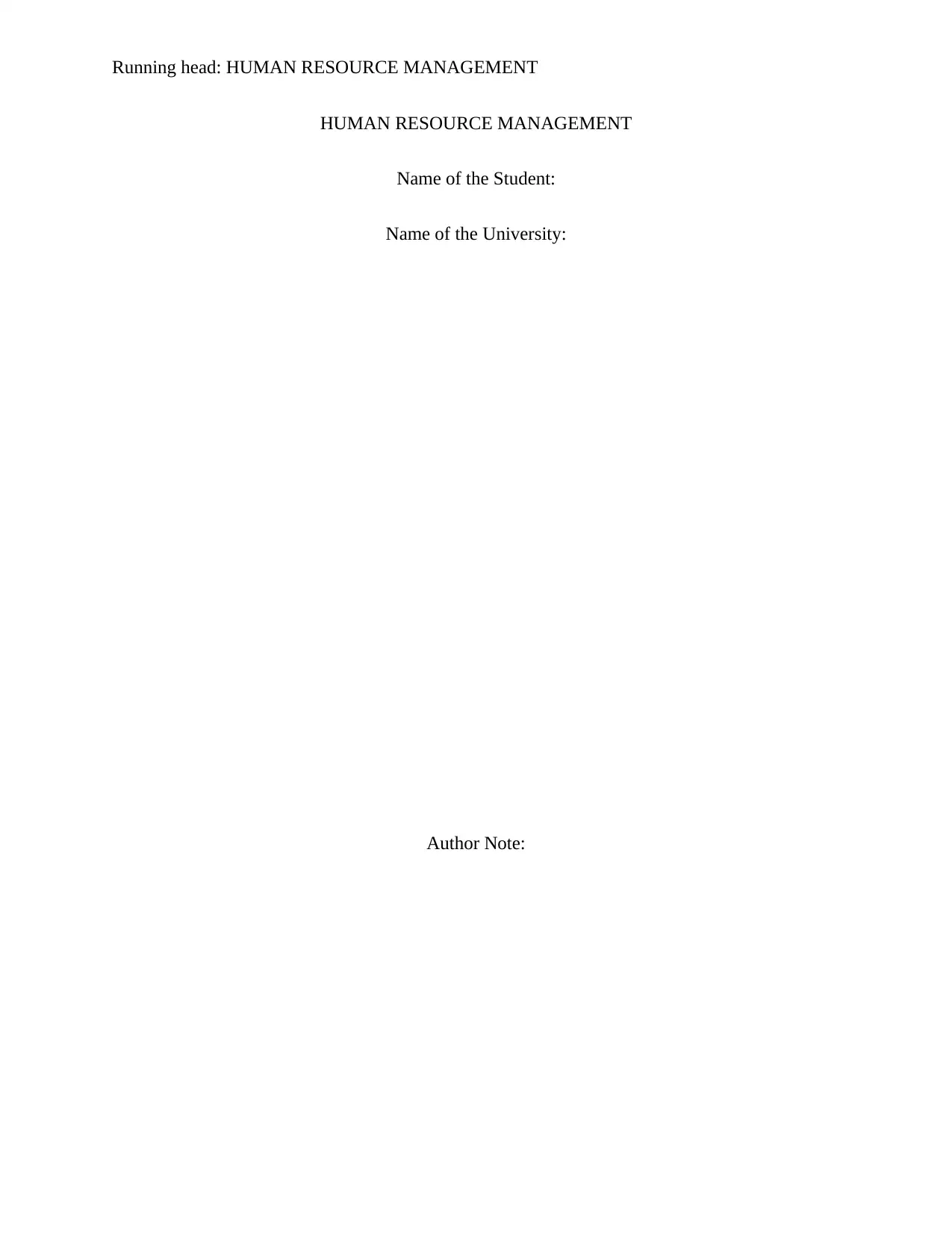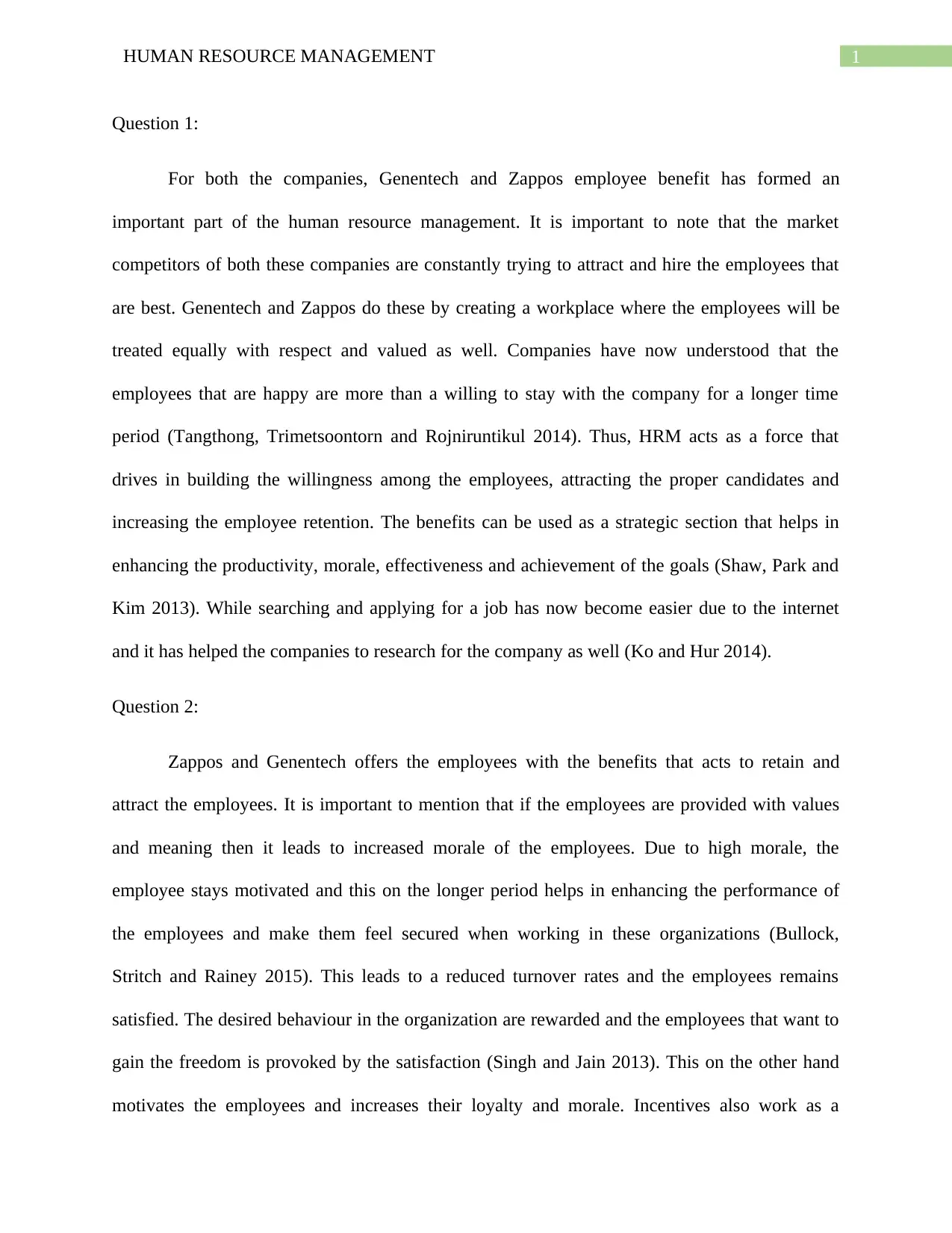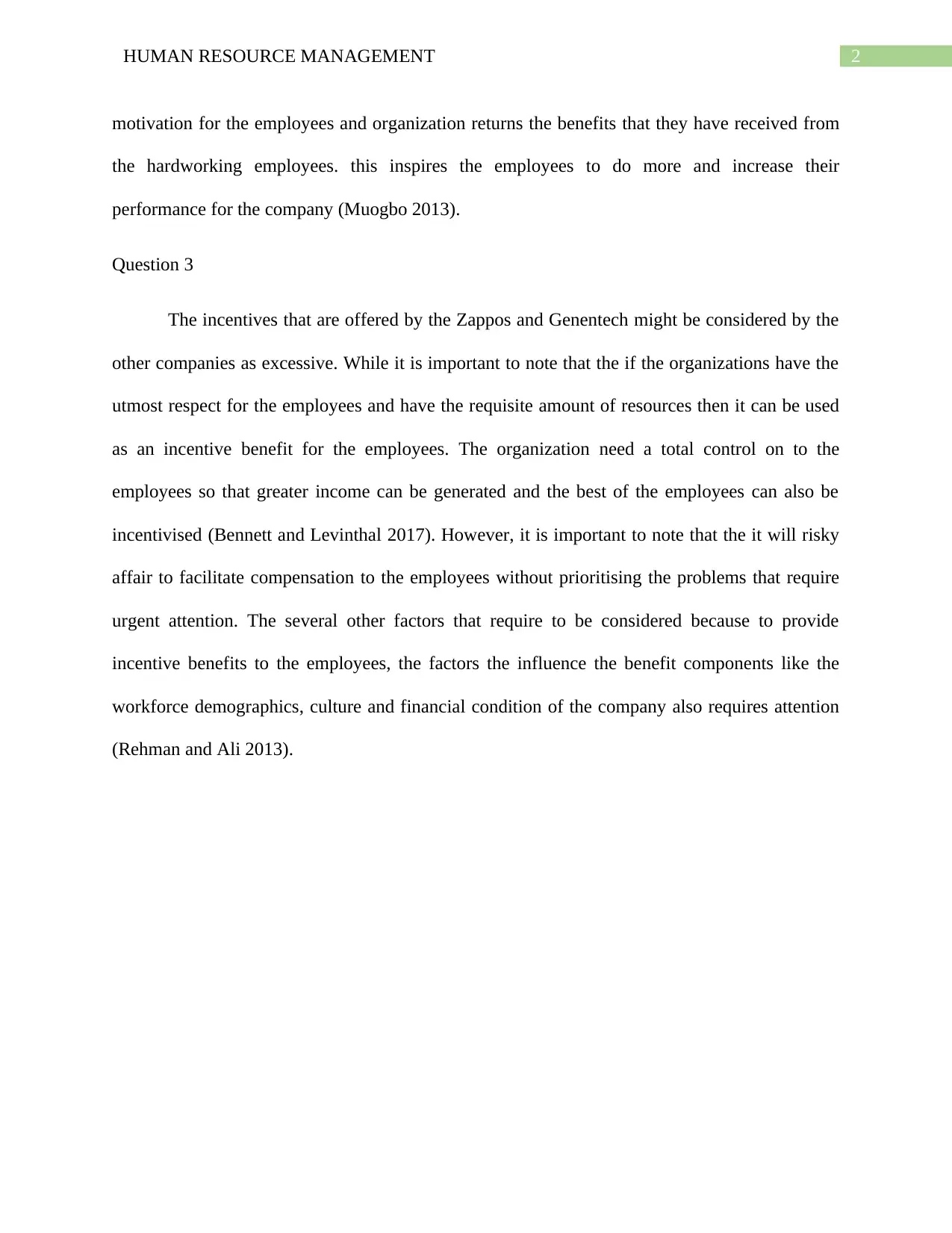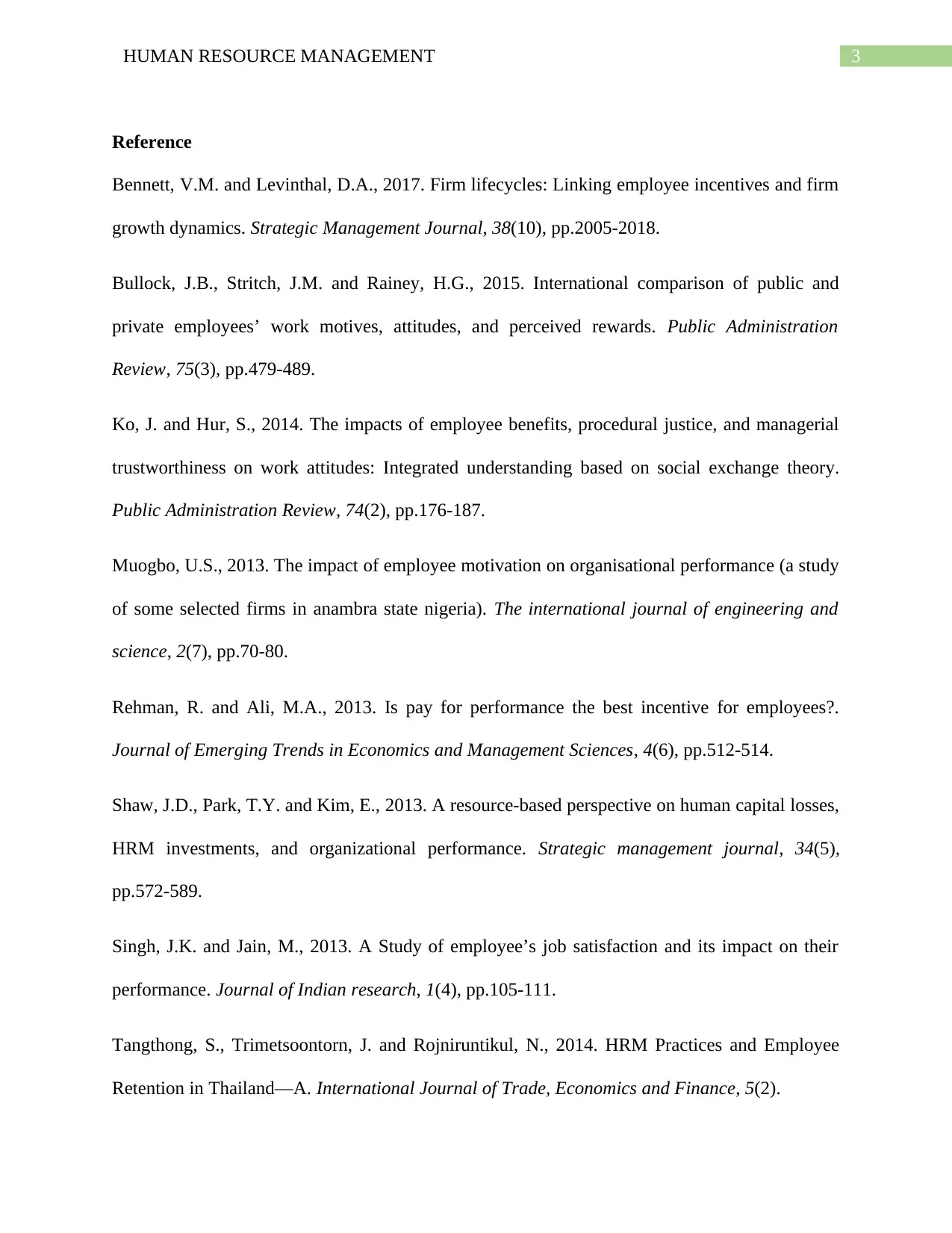Human Resource Management Analysis: Genentech and Zappos Case Study
VerifiedAdded on 2023/01/13
|4
|907
|22
Report
AI Summary
This report provides an analysis of the human resource management (HRM) practices employed by Genentech and Zappos, focusing on how these companies attract and retain employees. The report begins by highlighting the importance of employee benefits in a competitive job market, where companies must strive to create a respectful and valued workplace. It discusses how HRM contributes to employee willingness, candidate attraction, and retention. The report then examines the specific benefits offered by Genentech and Zappos, emphasizing how these initiatives boost employee morale, motivation, and loyalty, leading to increased performance and reduced turnover. The analysis extends to the potential for other companies to adopt similar incentive programs, considering the need for careful resource allocation and the influence of factors such as workforce demographics and financial conditions. The report concludes by synthesizing the key findings and offering insights into the strategic importance of effective HRM in fostering a positive and productive work environment.
1 out of 4










![[object Object]](/_next/static/media/star-bottom.7253800d.svg)